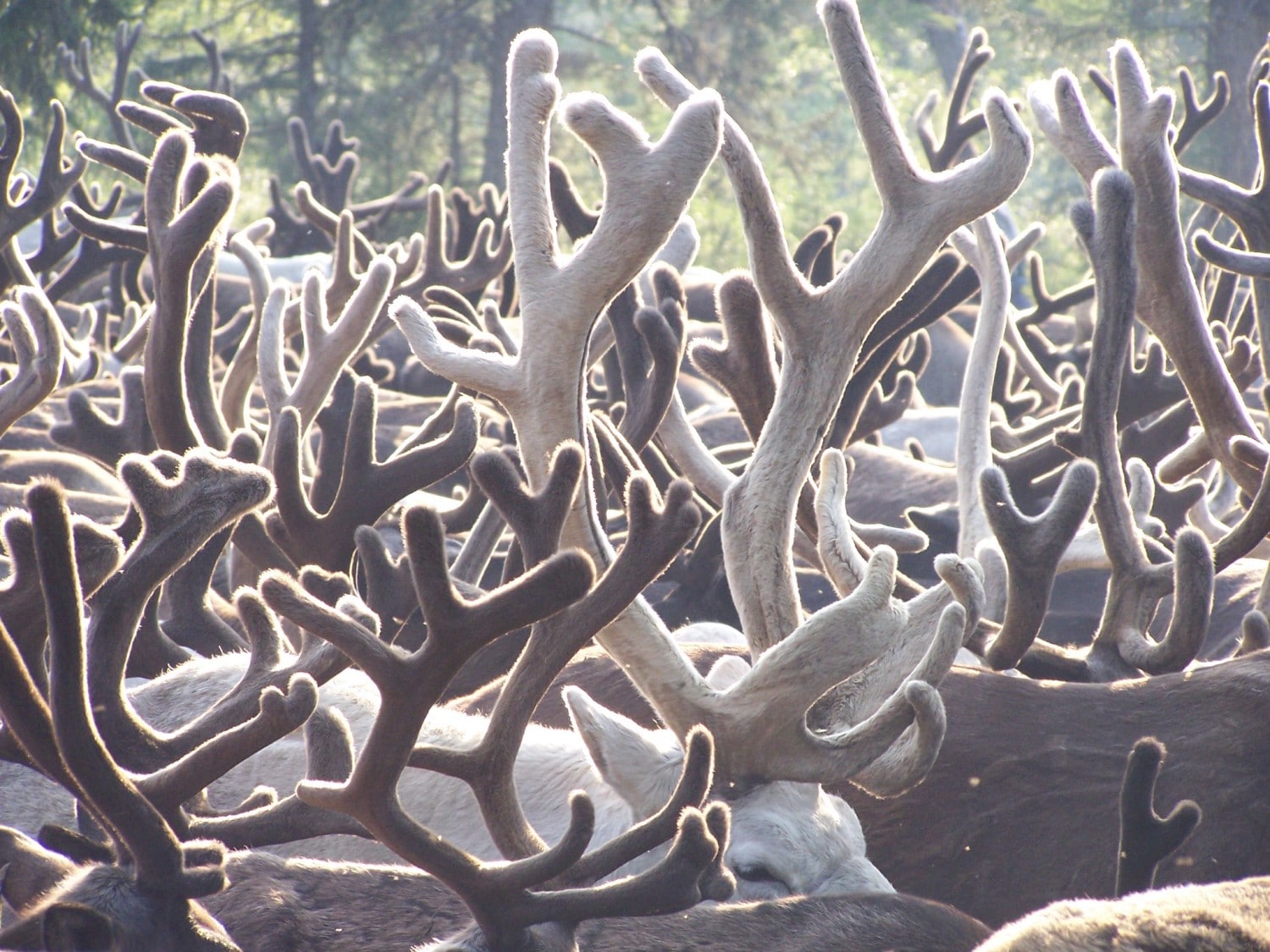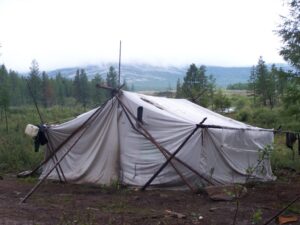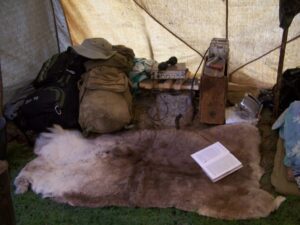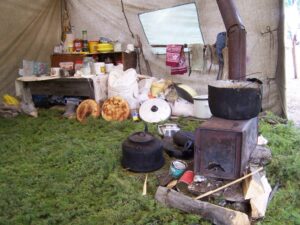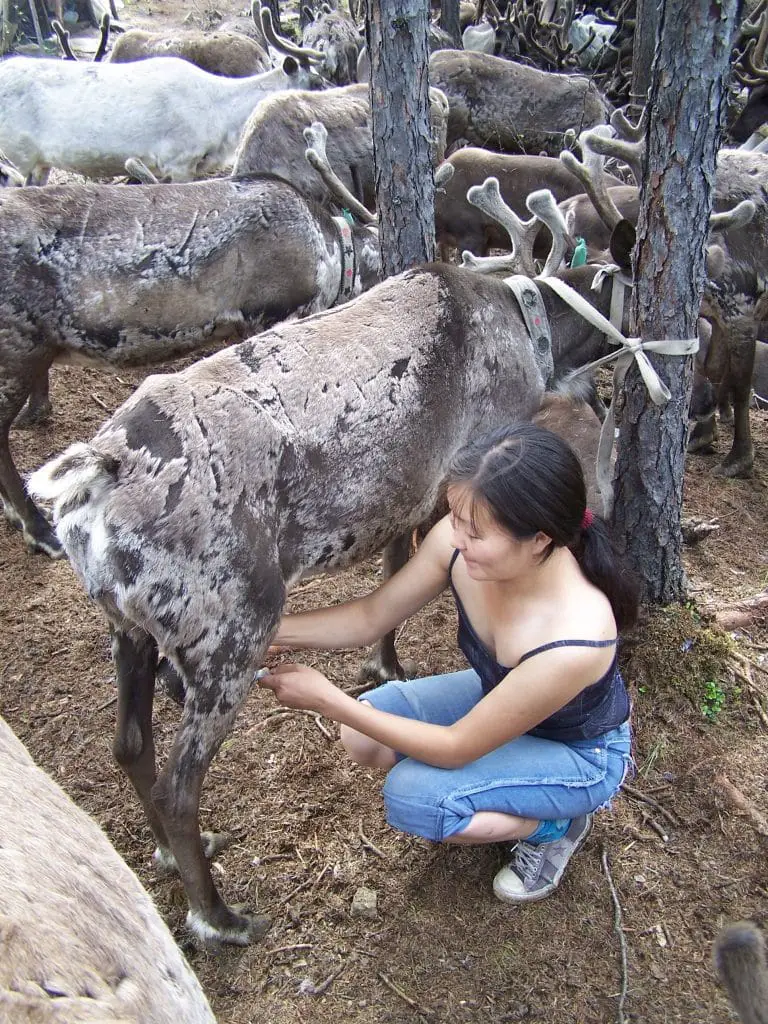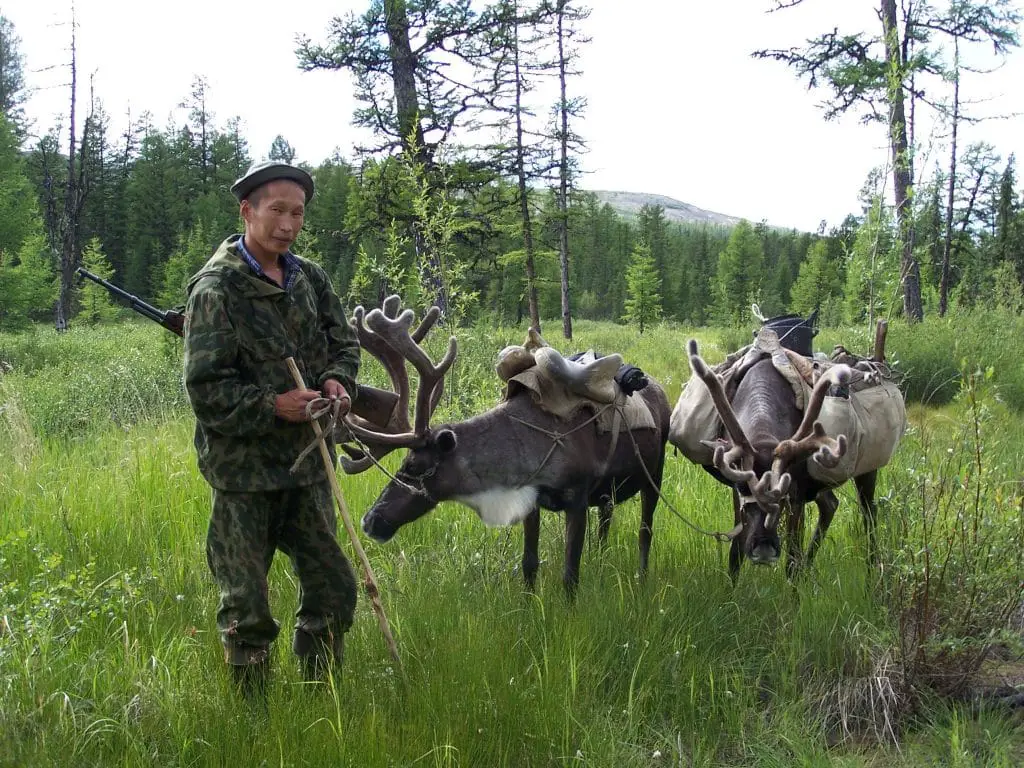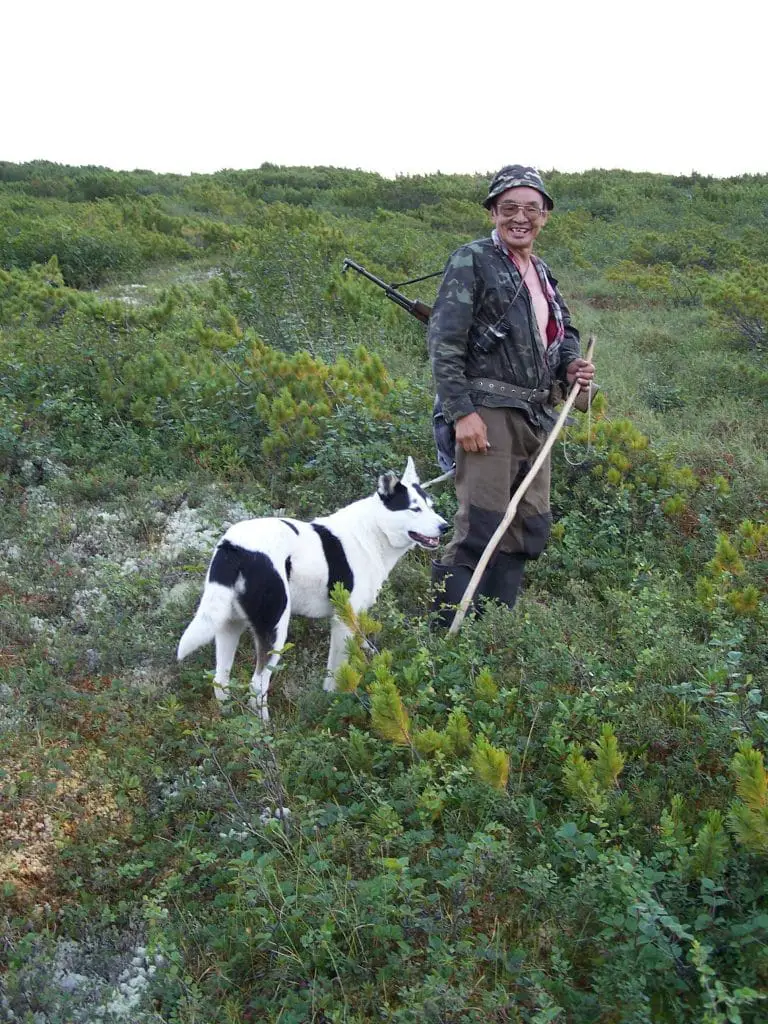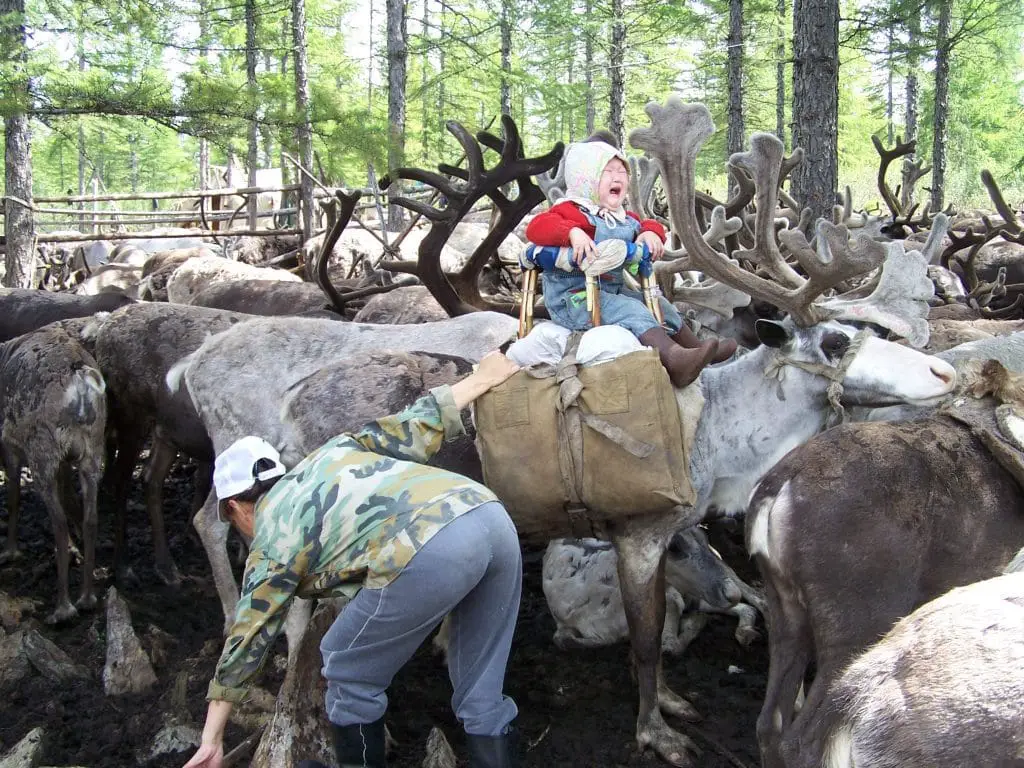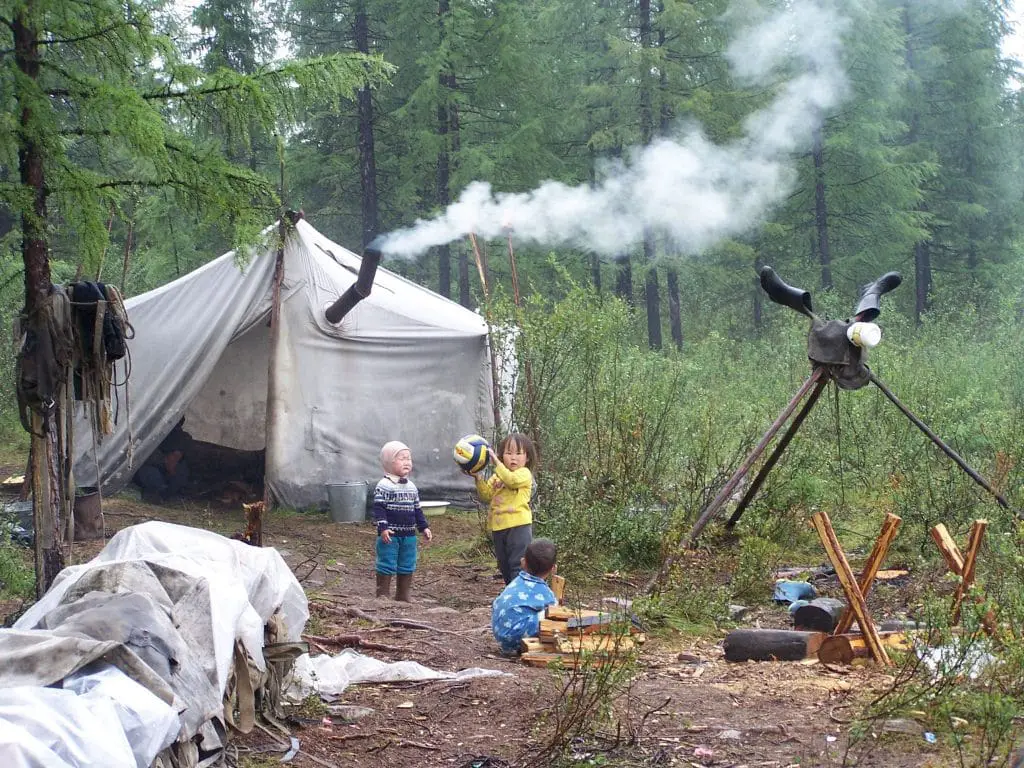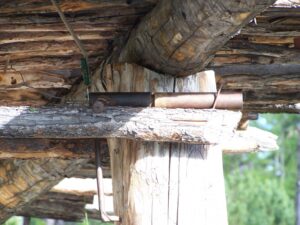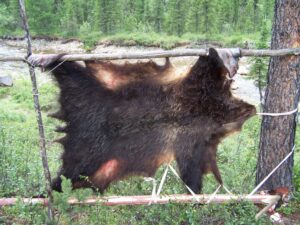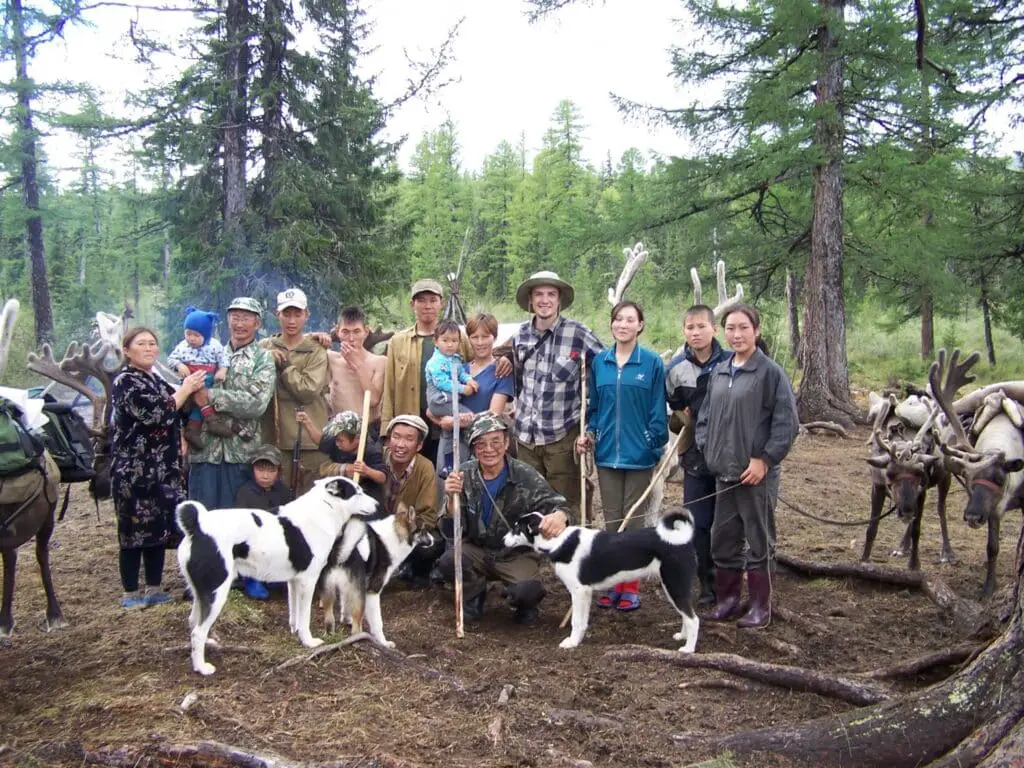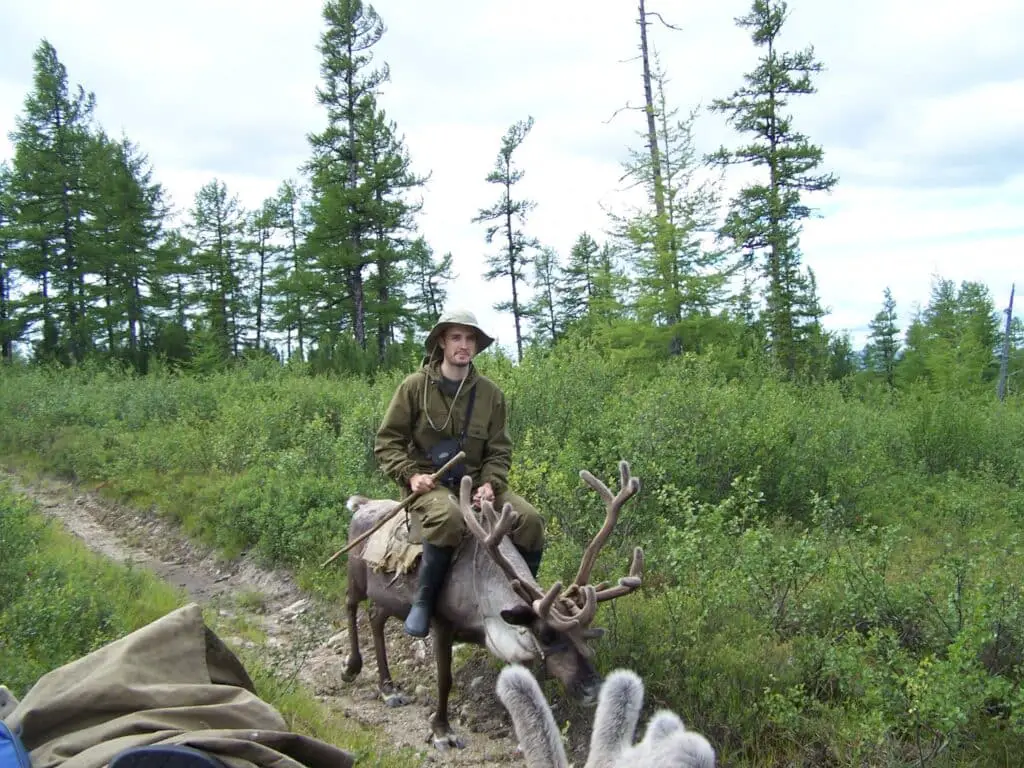The Evenki people are an indigenous group of eastern Siberia. They have a distinct language, which is part of the Tungusic language family, and their traditional lifestyle centers around reindeer herding and hunting. They are traditionally nomadic, taking their herds further north in the summer and returning to a more southern settlement in the winter. Traditional Evenki culture emphasizes shamanism and respect for nature.
The Evenki were conquered first by the Mongols and then Tsarist Russia – under both, they were subject to taxation payable in furs. The Soviets disrupted their way of life even further, forcibly organizing them into settled and less efficient reindeer farming collectives. Today, many Evenki have returned to a partially nomadic lifestyle but face ongoing challenges such as land rights, climate change, and preserving their language and culture.
Joshua Blackwelder spent the 2005-2006 school year with SRAS, studying Russian at St. Petersburg State University and then Khabarovsk State Pedagogical Institute. He used that education to launch a two and a half month field research project living and working with a group of Evenki reindeer herders as a student of anthropology. His field research documented the modern Evenki lifestyle. He wrote the article below based on his field notes. This article was originally published in 2008 and was most recently reformatted in 2023.
Preparations for Field Research on the Evenki
I first became aware of the Evenki reindeer-herding nomads of the Siberian Far East as an undergraduate pursuing a Bachelors of Science in Anthropology. Fascinated by the idea of an entire culture based on fur hunting and reindeer husbandry, I began to research the history of the Evenki from the prehistoric domestication of the reindeer to the collapse of the Soviet Union in 1991. As state subsidies dissolved so too did the widely mismanaged state reindeer farms. The herds were dispersed among the families of the Evenki workers who have since returned to less industrialized and more traditional forms of reindeer pastoralism and fur hunting.
I began to research problems and perspectives of these family collectives in context of post-Soviet land reforms and natural resource exploitation. Fortunate enough to win the necessary grants, I began planning a year-long research trip to Russia. Organized through SRAS, I first completed intensive Russian language training at St. Petersburg State University with a corresponding internship at the Russian Ethnographic Museum. From there I traveled across Siberia to Khabarovsk for further language training and research consultation at the Khabarovsk State Pedagogical Institute. There I was connected to the Association of Northern Minority Nationalities who referred me to their office in Tynda—the launching point for my two-month fieldwork in an Evenki reindeer collective.
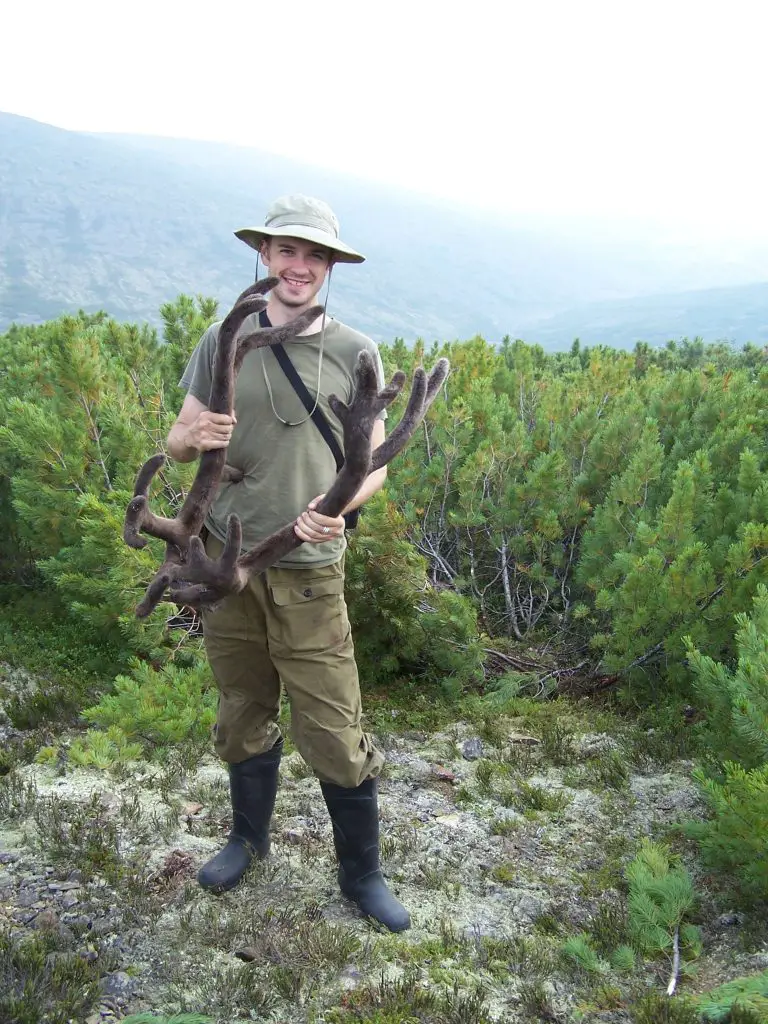
Once in Tynda I was introduced to the heads of seven reindeer collectives, who were returning to their camps in the Taiga from an annual auction of sable furs. After toasting away two-bottles of vodka, I made my offer. I asked to accompany any one of them to their camp for a period of two and a half months. There I would help out as they saw fit while taking notes and photographs. In exchange, I offered to purchase their summer supply of food. The first five leaders rejected the proposal and the sixth accepted. The trip began the next morning involving three days of logging trains, rafts, jeeps, and finally boots and backpacks.
I’m not sure if offering to donate items is common among other ethnographers or not, but it certainly made my job easier. I think that having a foreign ethnographer there for such a long time is — at least initially — a risky and uncomfortable experience. They may feel liable for the safety of a foreigner or excessively scrutinized. Many are therefore hesitant to accept. By offering the food I was able to offer them an economic incentive to compensate for the disincentives. I was careful not to offer anything that they didn’t already have in the culture — such as a GPS device, which might have changed the cultural landscape I was trying to study. The free food helped them financially, off-set any calorie loss that might have occurred from feeding me, and maintained their already existing lifestyle. As the Evenki diet is simple, I spent about $450.
Evenki Reindeer Herding Camp: Food and Shelter
I approached the camp for the first time after nightfall. I was greeted first by a pack of growling husky-mutts who calmed down after they recognized Slava, the camp leader. As we walked closer I began to hear deep guttural grunting from the unseen reindeer grazing in the woods around me. Slava explained that in the summer months, the reindeer would scatter through the surrounding hills and graze at night while the temperature was cool and the mosquitoes were fewer. The collective kept 400 head of reindeer that are only corralled during the hours prior to a migration. During the day the reindeer return to camp to escape the heat and the clouds of blood-sucking insects. The four tents of the camp are arranged in a circle alongside a series of fire pits which are tended throughout the day. Two tents were used by herders and their family members visiting during the summer. The other two tents housed the single “ranch hands.” I was in one of these tents. The reindeer gather within the tent circle while the smoking fires drive away the swarming insects.
Traditionally Evenki tents were made of birch bark in the summer and reindeer fur in the winter. Since the time they began to be conscripted into the Soviet army however, they adopted canvas tents similar to what the army uses. This change likely may have occurred because the portability of the light fabric was a huge benefit during migrations. They are harder to keep warm, but firewood is not in short supply in the Taiga.
Inside the tents the open floor is lined with soft branches. In the center of the tent is a small wood burning stove with a tea kettle atop. Reindeer hides act as mattress pads and blankets. A single hand-powered radio transmitter in the corner of one tent functioned as the only form of outside communication. Calls went directly to the district dispatch. The dispatch would relay typed messages from the villagers to the distant camps and could accept incoming messages as well. Against the opposite tent pole leaned the hunting rifles—including WWII-era Mosin m/44 carbines. At night I would drink thick black tea or vodka around the stove before lying down on the fur pad to sleep and in the early mornings I would awake to the grunting and shuffling of the returning reindeer.
Meat and lepushki are the core staples of the Evenki diet. Lepushki are unleavened loaves of wheat bread, broken—not sliced—and dipped in vegetable oil. They are similar to Russian lepyoski, but used no honey or sour cream in the baking process, meaning that the bread was exceptionally thick, heavy, and very dry.
Lepushki and black tea usually constitute breakfast while lunch and dinner consisted of unseasoned, boiled reindeer meat. This was to be eaten with one’s fingers and a hunting knife. The meat was gamey and delicious. All parts of the reindeer are eaten. First to be eaten are the quickly perishable organ meats: brains, eyes, kidneys, liver, and heart. Bones are boiled and broken and the jellied marrow eaten. Depending on the season, even the antlers can be roasted and eaten. Pits, dug into the earth and covered with sticks and rocks, functioned as makeshift refrigerators.
Seven or eight times richer than goat milk, reindeer milk is thick—bordering on the texture of yogurt—and serves as the most important source of vitamins in the Evenki diet. Children too young to hunt usually spend the day milking the reindeer, or else gathering wild berries and fishing. Berries mixed with fresh reindeer milk are an especial treat. Before each meal, a small portion of the food is fed to the fire spirit who is thought to protect the camp.
Unlike northern tundra nationalities such as the Dolgans, Koryats, and Chuckchee, the Taiga-dwelling Evenki do not raise their herds for slaughter and meat sales. Rather, their herds are raised for purposes of transportation, milk, and insurance against emergency food shortages. Their main income comes from the sale of hunted fur species such as sable and minx. The deer meat that is eaten daily comes from hunting wild reindeer in the area. Other income comes through the spouses that remain in the villages. They might sell fruits and vegetables, teach school, or work in the village shop or post office.
Hunting and Gathering
After camp is set in a new pasture, several of the men will load up one reindeer with enough lepushki to last one day. They call the best trained tracking dog and travel higher in the mountains for the hunt. Once the food supply is gone, the hunters are dependent upon whatever they are able to gather. I recall one particularly sparse hunt in which the hunters and I traveled for two days without food—living off a couple handfuls of gathered berries and a small grouse we had managed to shoot.
Using the berries and water squeezed from moss roots, we made the grouse into a soup. The head of the grouse was hung according to Evenki traditions in the branches of a tree. Evenki animist religious beliefs depict the souls of children who die during or shortly after childbirth as birds. Birds then are respected as spirits awaiting a second chance at human birth. Failure to hang a bird head back in the branches could result in infertility.
As the soup was boiling, Oleg, the eldest Evenki hunter in our party pulled a small leather pouch from around his neck. When butchering a reindeer, small “floats” are sometimes—though rarely—found within the intestines. These are pouches of mutated skin with the fur growing internally, forming a soft leather ball. These floats are considered hunting charms to be kept and touched by none other than the hunter. He smoked the charm above the fire and fanned the smoke in all directions. Though he assured me a large buck would cross over the summit at any minute, none in fact arrived. After a freezing night’s sleep under the stars, we returned hungry and weak to camp. That night they slaughtered one of their own deer.
Moving a Evenk Camp
Reindeer feed primarily off of a thick ground moss. To be sure that the moss is not overgrazed—or the local animals over-hunted—the collective migrates to a new pasture every ten days. Migrations are short, usually no farther than 20 kilometers from the old camp. An average reindeer can travel 80 kilometers over terrain too rough for a horse. Prior to a migration any wandering deer are tracked down and either corralled or bound to a tree. Camp is torn down, packed onto saddles, and loaded on the backs of the strongest deer. Then the riding saddles are placed on the personal reindeer. Children are placed in bucket-like “baby seats” made from two conjoined wooden rings that are bound to the back of the deer.
Riding a reindeer is no easy task. Reindeer saddles—made from elaborately decorated reindeer leather and bones—have no stirrups. Furthermore, unlike horses or mules, reindeer have weak backs and so the saddle must be placed high on the shoulders of the deer. The shifting scapulas make balancing critical, especially when crossing rocky riverbeds or in full sprint across a meadow. The deer is spurred with a long stick that can also be used in case of an emergency to recapture ones balance. A single rein is used to whip the deer or to stop it. The rider steers the animal by kicking the side of the head opposite to the desired direction. At the same time riders must watch over the remaining hundreds of deer to be sure they stay with the group. If they wander, the rider must chase after the stray and guide him back to the herd.
After arriving at the new pasture, the whole family helps to pitch camp. The children gather branches for tent flooring, the men chop firewood and set up tents, and the women begin the next meal. Actually, through most of the year, children do not travel with the collective. Through most of the spring, fall, and winter the children remain back in the village with their mothers, leaving the men alone to tend the herds in the harsh weather. This is a relatively new phenomenon that has weakened traditional family ties. Prior to the forced settlements and Soviet schools of the 1930s the families all worked with the herd throughout the year.
Evenk Family, Language, and Folklore
Linguistically, most Evenki children under age 20 are unable to speak the Evenki language. If their fathers still practice reindeer husbandry the children may be able to understand it. The Evenki language is only truly preserved among the herders themselves. Children typically respond in Russian. The herders, raised almost entirely in the Taiga, are also able to speak in broken, but understandable, Russian.
The Evenki children I met were agile, happy, and rarely disciplined. They were left on their own to learn that knives are sharp and pots are hot. Toddlers, however, are tethered with a sliding cord to a horizontal rope tied between two trees, giving them free running space, but keeping them from entering the center of the herd where threat of trampling is high.
At night the families gather together, swim in the river, play games such as dodge ball and hide-and-go-seek, or share scary stories around the fire. Interestingly, such stories differed from the usual ghosts and ghouls of western campfires. Some Evenki stories are designed to teach respect for Evenki traditions. Children are taught not to disrespect the seveni—wooden idols in the woods representing the protecting spirits of the family hunting grounds. Though few of these figures are carved for religious purposes today, those made by the children’s grandparents remain standing and are still treated with reverence. Children who vandalize these figures in the stories frequently starve.
Many Evenki campfire stories have a pedagogical aspect for surviving in the Taiga. Other stories warn against wandering alone into the Taiga. Children who wander off into the woods are tricked by malicious spirits who rearrange the trees in order to disorient the child. By far the most fearsome and reverent of the stories, however, spoke of the “god of the Taiga,” – the bear.
Stories of bear hunts and man-eating bears are passed down from one generation to the next. Variations of a popular fictional tale describe an enormous, red-eyed bear that stalks a party of hunters or an army squad, methodically picking off and devouring the last men of the line. Other stories are told as true accounts of actual hunts. One of the more memorable accounts detailed the winter bear hunt of one herder’s father. Having located the snow-covered den of a hibernating bear, the herder’s father made a long spear from a tree branch using his hatchet. He then drove the spear through the snow and into the burrow, arousing the bear from its hibernation. This is a typical procedure for winter bear hunts. Once awoken the bear exits the den and is shot by the waiting hunter. On this particular hunt, however, the gun misfired and the angered bear attacked. Nevertheless, armed with only his hatchet, the herder’s father succeeded in killing the incensed animal.
Keeping the Evenk Camp Safe
Bears are a very real threat to the reindeer herders. Bears, attracted to the dense concentration of reindeer, are often sighted very near the camp. I recall one week in which a large number of the deer had returned to the camp wounded and mauled. We had spotted tracks and droppings but not the bear itself. Then we discovered that the labaz—a stilted storage unit for food and seasonal supplies—had been clawed open. Inside, the food supply had been ravaged. While my tent-mate Oleg was repairing the labaz, he spotted the adult male brown bear sneaking twenty yards behind him. Not having his rifle at that moment, he ran back to the camp and told me to leash the dogs and follow him. The dogs caught the scent but lost it two hours later.
We set a trap for the bear at the labaz. The trap was a spring-gun made by placing a shotgun shell into the back of a small pipe with a trigger pin set against the rim of the shell, lined up with the primer. This trigger pin was powered by a compression spring locked in place with a separate lock-release pin. The trap was fastened unto the underside of the labaz, near the telltale claw-marks of the bear. A long string bound the release pin to the bait—a bag of fish intestines. This string was then carefully balanced over a nail that functioned as the axle of a simple fixed pulley. The bait was carefully hung in front of the loaded barrel. When the bear stood up to pull the bag down from the labaz, the pin would be released and the spring gun would discharge into the bear’s head or chest. Having set the trap, we returned to camp.
The shot awoke us at roughly three in the morning. The men immediately loaded their rifles and ran into the woods. Far behind them, I leashed four of the dogs and headed toward the labaz. Soon I could hear the heavy grunting of the wounded bear and saw the Evenki hunters positioned silently behind some nearby trees. They motioned to unleash the dogs. The dogs were anxious, frozen in focused stares pointed toward the darkness where the wounded bear was struggling. Immediately after untying the knots, each dog lunged into the shadows, jumping at the throat of the injured animal. Five minutes later, with no rifles fired or dogs wounded, the bear was dead.
Considered the most powerful spirit in the Taiga, the processing of a killed bear is much ritualized. To trap the anger of the bear, his mouth is tied shut with his own intestines until the hide is completely removed from the body. The claws, penis, and head are then removed. A platform is built high in a tree far from the camp and these parts, believed to contain much of the bear’s power, are then placed on the platform and covered with branches. The Evenki believe that should these parts be carried back to the camp, the reindeer would become sick and die.
Though I was informed during the butchering of the bear that a special ceremony accompanies the placement of these parts onto the platform, I was not privy to the specific details. The eldest in the camp carried out the ceremony in secret while I was away fishing with the younger herders. I found—upon my return—that they were secretive when questioned on the matter. In fact, I only discovered the location of the sepulchral platform by chance days later while photographing chipmunks. I am therefore uncertain as to any symbolic significance of the platform. One utilitarian reason, however, may be to keep the dogs from later dragging these feared remains into the camp.
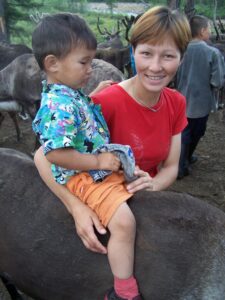
The bear’s hide is kept and the remainder of the bear is eaten. The paws are an especial delicacy and were indeed deliciously tender. The gall bladder was dried and saved for sale to the Chinese as a traditional medicine. These transactions would occur in Blagoveshensk during the annual fur auctions. (Reindeer penis and antlers are also sold for use in Chinese medicines.) The bear’s fur was kindly given to me. Being a summer coat, the fur was not as thick or valuable as that of a bear skinned in the winter. For the same reason, sables are only hunted during the winter months. I was nevertheless honored. I was taught how to clean it, process it, and soften it, only to have it later confiscated by the Russian customs officer at the Khabarovsk airport.
To own a bear hide legally in Russia, one must have all the necessary veterinary certificates and hunting licenses. I had gone through the lengthy process of getting these, but I was informed by the customs officer that one needs an additional “international hunter’s” permit to remove a fur from Russia.
Leaving Camp and Heading Home
As my fieldwork came to an end, the family gave me several other gifts. I was given a hat, coat, and boots made from reindeer fur. Another herder presented me with a set of wooden reindeer toys that he had carved the night before. The set included two figures of packing reindeer that would carry tents and supplies during migrations and one personal riding reindeer used for carrying people. Each is recognizable by the structure of the saddle on its back. The riding reindeer figure he jokingly said was my personal riding reindeer, whom I had named “Fairweather.”
Each of the herders has a personal riding reindeer that they raise and ride from the time it is full-grown until its death (approx. an 8-year life span). I was given a personal riding reindeer of my own, to watch after and ride for the duration of my stay. I named him Fairweather due to the “fair-weather” nature of our relationship—both figuratively and literally. In hot, sunny weather, he would trudge grudgingly along, stubbornly ignoring my commands and even bucking me. However, in cold, dark weather, he would respond vigorously to my commands with quick obedience, galloping at breakneck speeds.
Though I began the trip in the north of the Amur Oblast, I had, after several long migrations to the north, traveled deep into the Sakha Republic. The trip home was therefore much longer than the initial trip to the camp, and quite eventful. I was accompanied for the first leg of the journey by a small group of Evenki hunters who navigated our way back down through the mountains. Though a heavy storm of slushy hail and rain thoroughly soaked us all and limited our visibility, it also limited the number of blood-sucking insects and kept Fairweather in his better element, galloping sprightly and strong. The low rivers we had crossed on earlier migrations were now violent torrents. The water rushed over Fairweather’s back and up to my stomach. I held my digital camera high above my head and focused on maintaining my balance. In the water in front of me Fairweather’s neck, head and antlers bobbed like some unusual sea monster. Reaching the high bank on the opposite side, Fairweather leapt magnificently from the current with a loud explosion of water, nearly throwing me backward into the river. I dove forward bear-hugging Fairweather’s neck for support. Once on top of the embankment he broke into a brisk sprint across the meadow, heading toward the sludgy pits of the Plamya 2 gold mines. Watching the Evenki hunters to my right and left deftly maneuvering these awe-inspiring animals through the inclement weather and shivering with cold, adrenaline, and apprehension, I was struck by the magnificent, beautiful, frightening, and rare experience that had been these last few months. I was riding one last time with Evenki hunters deep in the undeveloped Siberian Taiga; it was unforgettable.
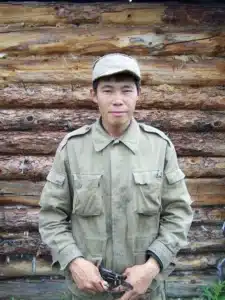
We eventually came across a gasoline truck returning from Plamya 2 and persuaded the driver to give me a ride to the river in exchange for a large cut of reindeer meat. I loaded my pack of gear and water-warped field notes onto the truck and bid a final farewell to my hosts. I reached the Nyukzha River that night. With no boats in sight, I expected to sleep in the sand. I wandered down some train tracks looking for a flat place to camp. Luckily, for ten dollars, a worker at a nearby train-yard gave me a bed for the night in a passenger car that was being repaired. I spent much of the following day trying to flag down passing fishermen on the river and eventually found a ride downriver to Ust-Nyukzha village, costing only a few hours of good conversation.
That night I stayed in the home of one of the herder’s parents. On my arrival months ago, I had made arrangements that I would stay there on my return trip. The exact date was never specified—nor could it have been, given the unforeseen complications presented by Taiga life. We had radioed in advance however, using the radio at the camp. They knew then that I would be arriving sometime within a four-day period. They welcomed me warmly with a good meal—Russian cucumber salad and boiled reindeer meat—a few shots of vodka, a trip to the garden banya and—for the first time in months—a soft bed.
The next day I was back on a logging train to Tynda, and from there I boarded a passenger train to Khabarovsk. After a week-long reunion with my classmates from the university, I finally boarded the plane to the United States, one bear skin poorer, but far richer in friends, research experience, and cultural knowledge of the little-known though deeply fascinating reindeer-herding Evenki of the Siberian Far-East.
You’ll Also Love

Moldovan Holidays 2026: A Complete Cultural Guide
Moldova is one of Europe’s most religious cultures, with about 95% of the population identifying with some form of Eastern Orthodoxy. Its holiday calendar is dominated by religious observances and even civic holidays are often marked with religious overtones, with speeches and services given by church officials. Moldova remains a largely conservative and majority-rural society, […]
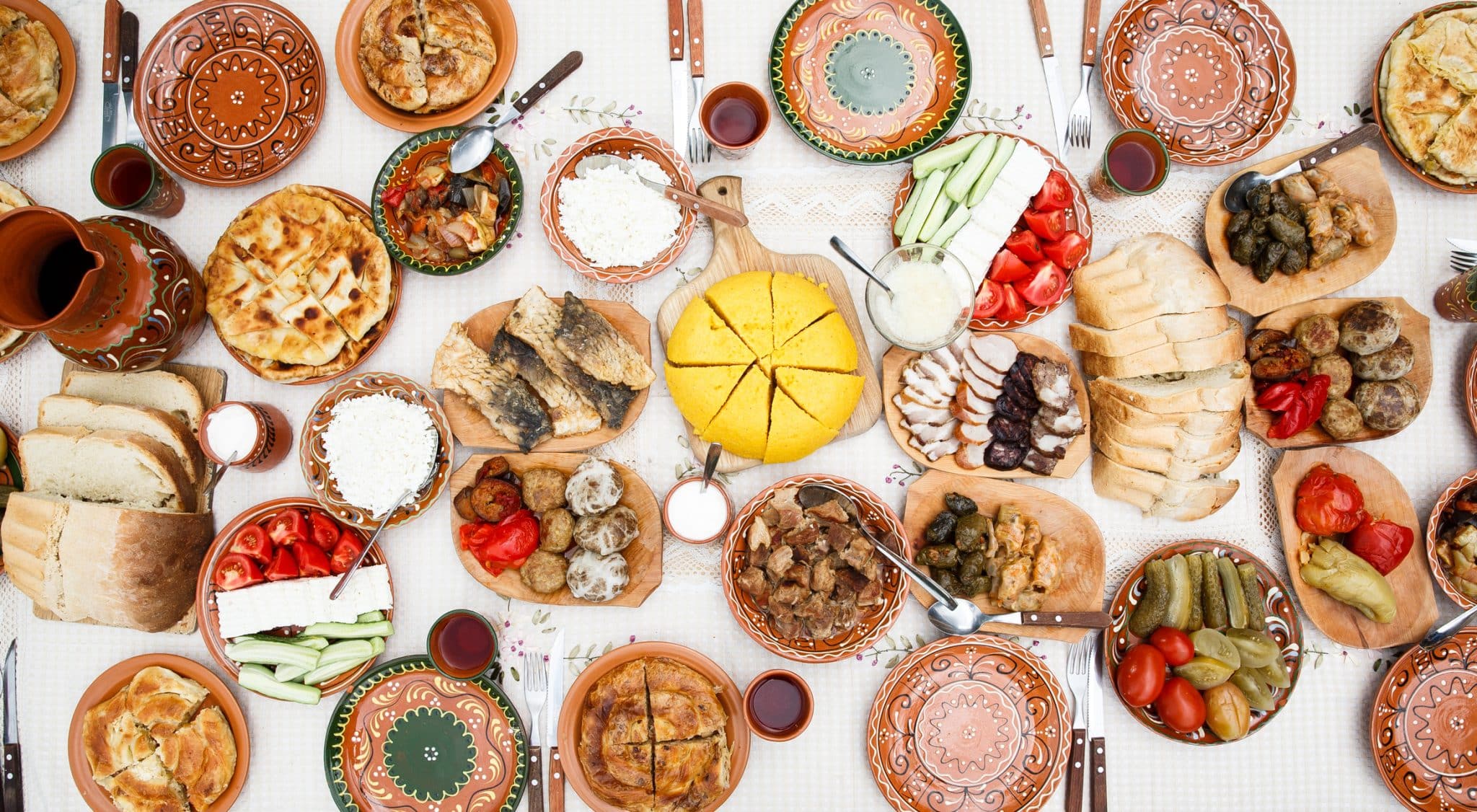
The Moldovan Food Dictionary
Moldovan cooking developed over centuries in the fertile lands between the Prut and Dniester rivers, where a temperate climate, rich soils, and rolling farmland supported abundant agriculture. Early inhabitants, including Thracians and Dacians, cultivated wheat, barley, and grapes, while herding sheep and cattle for dairy and meat. Roman rule expanded viticulture, but bread, dairy, and […]
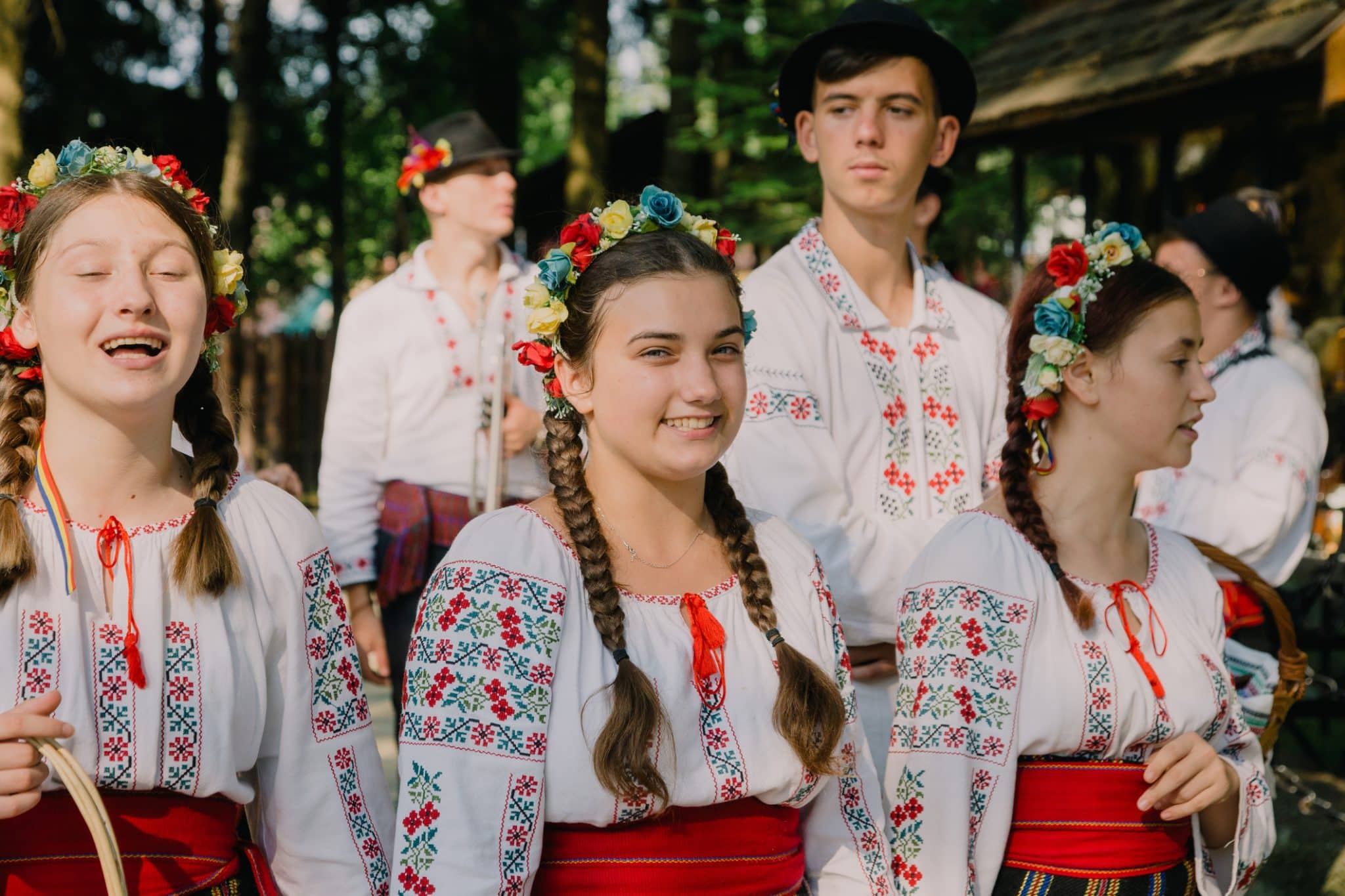
The Talking Romanian (in Moldova) Phrasebook
The Talking Phrasebook Series presents useful phrases and words in side-by-side translation and with audio files specifically geared to help students work on listening skills and pronunciation. Below, you will find several useful phrases and words. To the left is the English and to the far right is the Romanian translation. In the center column […]
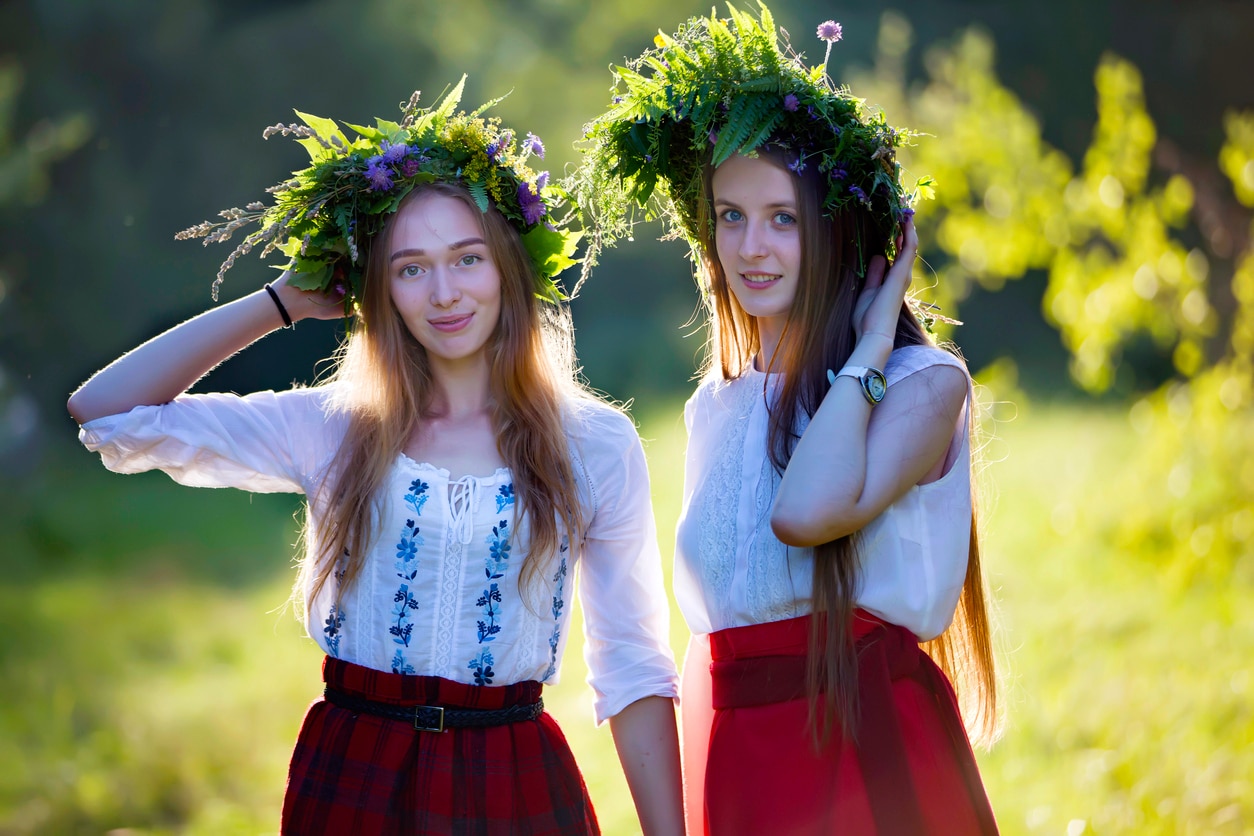
Christianity and Paganism in Russia: Моя Россия Blog
In this text, Tajik blogger Roxana Burkhanova describes, in Russian, the history and current status of Christianity and paganism in Russia as well as touches upon issues of religious freedom. While Orthodox Christianity is the most popular and politically powerful religion in Russia, pagan traditions still survive and other Christian faiths exist. This is part […]
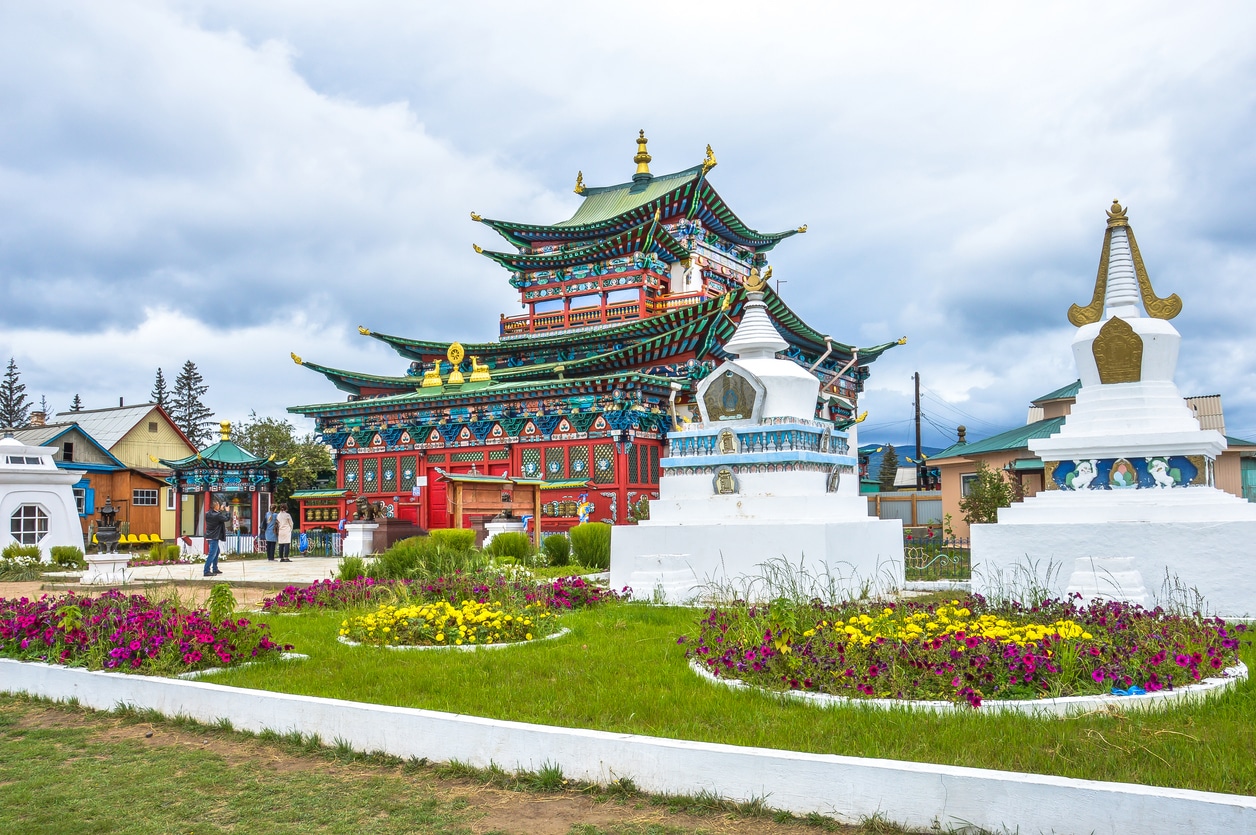
The Surprising Story of Russian Buddhism: Моя Россия Blog
In this text, Tajik blogger Roxana Burkhanova describes, in Russian, the history and current status of Buddhism in Russia. Buddhism is a small but historically important minority faith in Russia, especially in the Southern regions of Tuva, Buryatia, and Kalmykia. The material below details both the challenges that Buddhists have faced in integrating to wider […]

